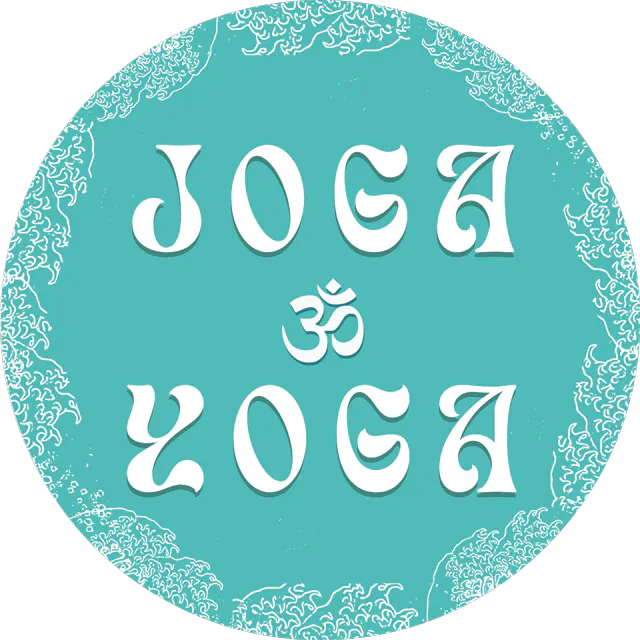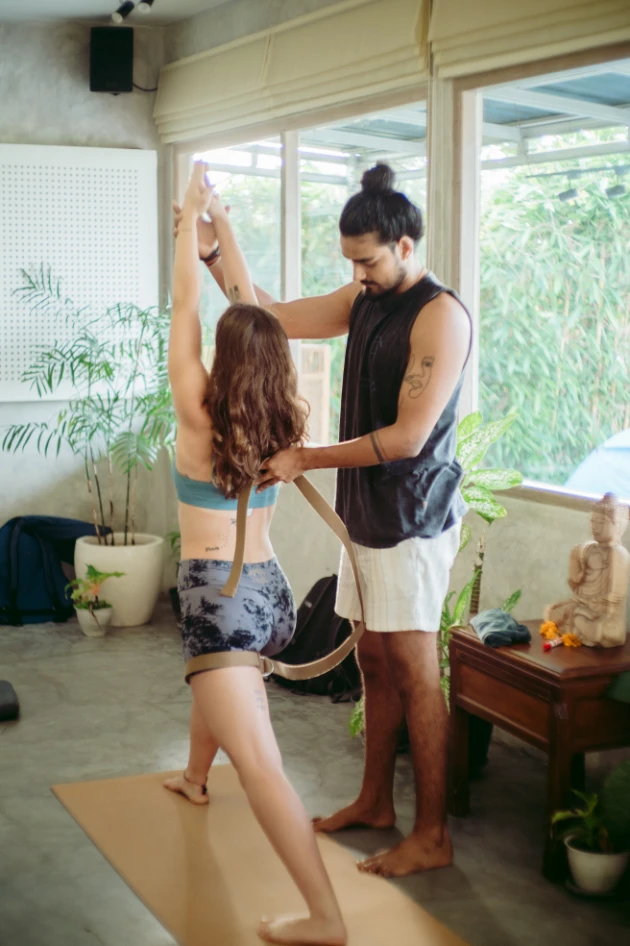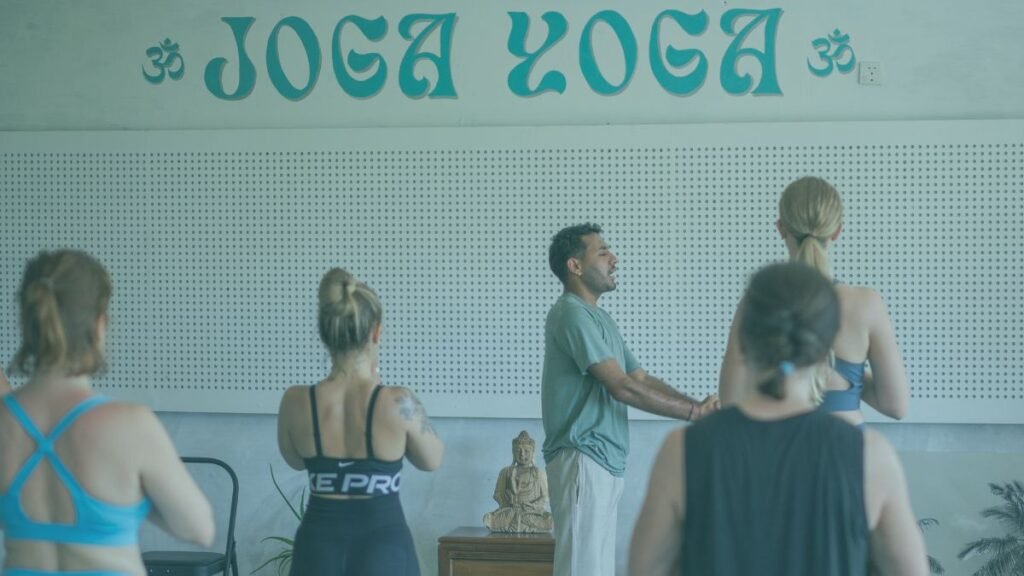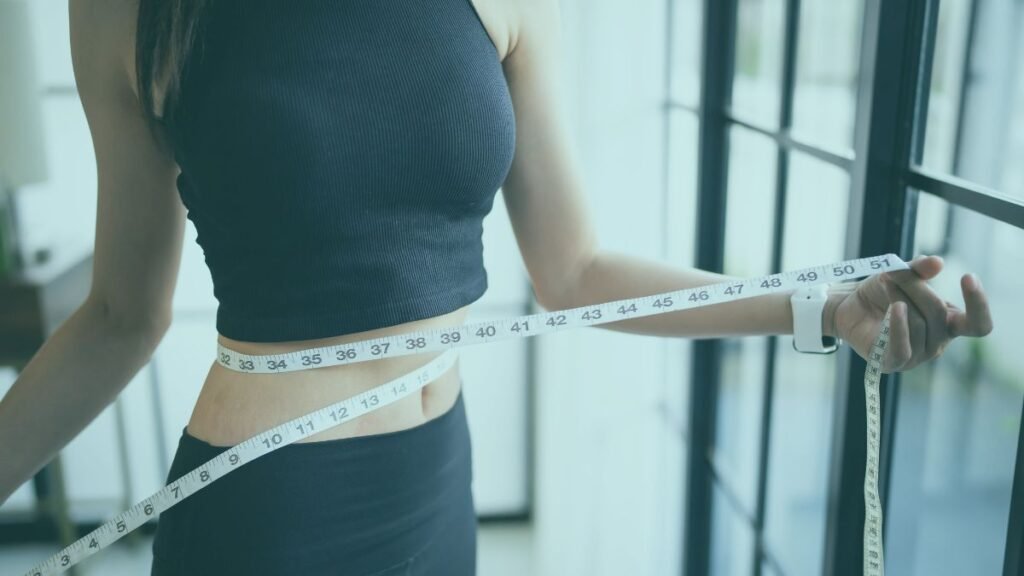Struggling with stubborn belly fat? You’re not alone.
Many yoga practitioners turn to yoga not just for peace of mind and flexibility but also to strengthen their core and achieve a more toned midsection. If you’ve ever wondered whether yoga can help you flatten your stomach, you’re not alone — countless people have shared similar challenges and breakthroughs.
The truth is, while yoga is incredible for building core strength and improving muscle tone, it’s not a magic solution for belly fat. However, when combined with the right approach to diet, strength training, and targeted poses, yoga can be a powerful tool for achieving a flatter stomach.
This article goes beyond the usual advice. We’ve compiled real-life insights from experienced yoga practitioners and fitness experts who have successfully toned their core through yoga. You’ll learn:
- The best yoga poses for core strength and fat reduction
- How diet and nutrition play a role in achieving a flat stomach
- Why combining yoga with other forms of exercise accelerates results
- How real people have transformed their midsection using yoga
If you’re looking for a structured way to improve core strength and deepen your yoga practice, check out our guide on Yoga Teacher Training in Bali. It’s an excellent way to strengthen your core, build flexibility, and develop a more balanced body — all while learning from experienced instructors.
So, whether you’re a seasoned yogi or just getting started, this guide will give you a clear roadmap to a stronger core and a flatter stomach.
Ready to take your yoga practice to the next level? Let’s dive in.

Why Yoga Alone May Not Be Enough for a Flat Stomach
Caloric Deficit is Key – “Abs are made in the kitchen.”
While yoga is great for building strength and improving flexibility, the truth is that fat loss ultimately comes down to burning more calories than you consume — also known as a caloric deficit.
Yoga can help tone your core and strengthen abdominal muscles, but if there’s a layer of fat covering those muscles, you won’t see definition unless you address your overall calorie balance.
- High-intensity forms of yoga — like Vinyasa, Hot Yoga, and Power Yoga — burn more calories than restorative or Yin yoga, making them more effective for weight loss and fat burning.
Best High-Calorie-Burning Yoga Styles:
- Hot Vinyasa Yoga – Can burn between 400–600 calories per hour.
- Bikram Yoga – Burns up to 500 calories in a single 90-minute session.
- Power Yoga – Similar to a strength-training session with a calorie burn of 300–500 per hour.
- Ashtanga Yoga – Fast-paced and physically demanding, effective for burning fat and building muscle.
If you’re looking to increase calorie burn and improve overall core strength, check out our guide on Hot Yoga Calories Burned. It breaks down exactly how different types of hot yoga impact fat burning and muscle definition.
Genetics and Hormones Play a Role
For some people, getting a flat stomach is more difficult due to genetics and hormonal balance. Some body types are more prone to storing fat around the belly, especially women.
- Hormonal Changes – Elevated levels of estrogen, cortisol, or insulin resistance can make it harder to burn fat around the midsection.
- Menopause Belly – As estrogen levels decline during menopause, the body tends to store more fat around the belly.
- Stress and Hormones – High levels of cortisol (the stress hormone) increase fat storage, especially around the abdomen.
Tips to Balance Hormones and Support Fat Loss:
- Increase protein intake – Aim for 80–90g per day.
- Focus on whole, unprocessed foods – Lean proteins, healthy fats, and complex carbs (like sweet potatoes and quinoa).
- Reduce processed sugars – Swap sugary snacks for fruits, nuts, and Greek yogurt.
- Manage estrogen levels naturally – Include foods like flaxseeds, cruciferous vegetables, and soy.
- Add strength training – Building muscle helps balance hormones and increase resting metabolic rate.
Stress and Cortisol
Chronic stress is one of the biggest roadblocks to losing belly fat. When stress levels are high, the body produces cortisol, which increases appetite, slows down metabolism, and encourages fat storage in the abdominal area.
- Yoga is particularly effective at reducing stress and lowering cortisol levels, but it needs to be paired with lifestyle changes to see significant fat loss.
Best Yoga Practices for Lowering Cortisol:
- Restorative Yoga – Focuses on deep relaxation to calm the nervous system.
- Yin Yoga – Targets fascia and connective tissue, allowing the body to enter a parasympathetic state.
- Pranayama (Breathwork) – Techniques like Nadi Shodhana (alternate nostril breathing) can reduce stress almost instantly.
Best Yoga Poses for Core Strength and a Toned Stomach
Strengthening the core is essential for a toned stomach, but it requires a strategic approach. While traditional yoga builds flexibility and balance, specific yoga poses can activate and strengthen the deep core muscles, including the transverse abdominis, obliques, and rectus abdominis (the “six-pack” muscles).

Building core strength not only helps with muscle definition but also improves posture, balance, and overall functional strength. Here are the most effective yoga poses for targeting the core and toning the midsection:
Plank Pose (Phalakasana)
Plank pose is one of the most effective full-body exercises, and it’s particularly beneficial for core strength. It engages the deep abdominal muscles, shoulders, and back.
- Start in a push-up position with your wrists aligned under your shoulders.
- Engage your core, squeeze your glutes, and keep your body in a straight line from head to heels.
- Hold for 30–60 seconds, gradually increasing the time as you build strength.
Why it works: Planks engage the entire core, including the obliques and transverse abdominis, which help flatten the stomach and improve muscle tone.
Pro tip: Try side planks to target the obliques and build overall core stability.
Boat Pose (Navasana)
Boat pose is a powerful core-strengthening pose that directly targets the rectus abdominis and transverse abdominis.
- Sit on the floor with your knees bent and feet flat.
- Lean back slightly, lift your feet off the ground, and balance on your sit bones.
- Extend your legs into a V-shape and stretch your arms forward.
- Hold for 30 seconds, then release. Repeat three times.
Why it works: This pose engages the lower and upper abdominal muscles while improving balance and stability.
Modification: Keep your knees bent if you struggle to hold the pose with straight legs.
Bridge Pose (Setu Bandhasana)
Bridge pose is effective for engaging the lower abdominals and glutes, which helps create a tighter, more defined core.
- Lie on your back with your knees bent and feet flat on the floor.
- Press through your heels and lift your hips toward the ceiling, engaging your glutes and core.
- Hold for 20–30 seconds, then release. Repeat three times.
Why it works: Strengthens the glutes and lower abdominals while improving spinal alignment and core stability.
Pro tip: For added difficulty, lift one leg off the floor while holding the pose.
Side Plank (Vasisthasana)
Side planks are highly effective for strengthening the obliques and improving lateral core stability.
- Start in a plank position.
- Rotate your body to one side, stacking your feet and extending your top arm toward the ceiling.
- Keep your hips lifted and engage your core.
- Hold for 30 seconds on each side.
Why it works: Builds strength in the obliques and improves overall core balance and stability.
Modification: Drop your bottom knee to the floor if holding the full pose is too challenging.
Chair Pose (Utkatasana)
Chair pose strengthens the lower body while engaging the core to maintain balance.
- Stand with your feet together and raise your arms overhead.
- Bend your knees and lower your hips as if you’re sitting in an imaginary chair.
- Keep your chest lifted and your core engaged.
- Hold for 30–45 seconds, then release. Repeat three times.
Why it works: Engages the deep core muscles and improves balance, which supports overall core strength.
Pro tip: Focus on engaging your lower abdominals throughout the pose to avoid arching the lower back.
Warrior III (Virabhadrasana III)
Warrior III is a balance pose that strengthens the core, glutes, and legs simultaneously.
- Start in a standing position.
- Hinge at your hips and lift one leg behind you while keeping your arms extended forward.
- Engage your core to maintain balance and alignment.
- Hold for 20–30 seconds, then switch sides.
Why it works: Requires core engagement to maintain balance and stability while working the entire body.
Locust Pose (Salabhasana)
Locust pose strengthens the back muscles and improves core stability.
- Lie face down with your arms at your sides.
- Lift your chest, arms, and legs off the ground while keeping your neck in a neutral position.
- Engage your glutes and core as you lift.
- Hold for 20–30 seconds, then release. Repeat three times.
Why it works: Strengthens the back extensors and core, improving posture and spinal alignment.
Yoga alone won’t give you a flat stomach, but targeted core work through these poses will strengthen and tone your abdominal muscles. When combined with proper diet and overall fat loss strategies, yoga becomes a powerful tool for sculpting a flatter, stronger core.
How Diet and Nutrition Impact Belly Fat
Achieving a flat stomach isn’t just about working out — what you eat matters just as much as how you move your body. Even with a consistent yoga practice, excess belly fat can persist if your diet is high in processed carbs, sugars, and unhealthy fats. Proper nutrition supports fat loss, muscle tone, and overall core strength.
Let’s break down the key dietary strategies that work best for reducing belly fat and improving body composition.
Increase Protein Intake
Protein is essential for building and maintaining muscle mass, which helps improve your resting metabolic rate (the number of calories you burn at rest). Higher protein intake also helps with satiety, reducing hunger and overall calorie consumption.
One of the most consistent pieces of advice from experienced yoga practitioners is to increase daily protein intake to improve muscle tone and reduce belly fat.
Research shows that consuming 80–90g of protein per day is effective for improving body composition, especially when combined with strength training and high-intensity yoga.
Suggested High-Protein Foods:
- Greek yogurt (18–20g per serving)
- Chicken breast (30–40g per serving)
- Eggs (6g per egg)
- Tofu (10g per serving)
- Lentils (18g per cup)
- Cottage cheese (14–20g per serving)
Tip: Aim to include a source of protein in every meal to maintain muscle mass and support fat loss.
Reduce Processed Carbs and Sugars
High sugar intake and processed carbs contribute to insulin resistance and fat storage, particularly in the abdominal area. When you consume sugary snacks, white bread, and pastries, your blood sugar spikes — leading to increased fat storage, especially around the midsection.
Reducing processed carbs and sugars helps stabilize blood sugar levels, reduce bloating, and promote fat loss.
Foods to Avoid:
- White bread and refined pasta
- Sugary snacks and pastries
- Soda and fruit juice
- Candy and chocolate bars
- Sweetened yogurts and granola bars
Instead, focus on complex carbs like brown rice, quinoa, sweet potatoes, and whole oats — which provide longer-lasting energy without spiking blood sugar.
Tip: Gradually reduce processed carbs rather than cutting them all at once to avoid cravings and energy crashes.
Importance of Healthy Fats
Many people mistakenly avoid fats when trying to lose belly fat, but the right types of fat are essential for satiety, hormone regulation, and fat metabolism.
Healthy fats support the production of hormones like leptin (which regulates hunger) and testosterone (which supports muscle growth). Including healthy fats in your diet helps reduce sugar cravings and keeps you feeling fuller for longer.
Best Sources of Healthy Fats:
- Avocado (15g per half)
- Almonds and walnuts (14–16g per handful)
- Olive oil (14g per tablespoon)
- Chia seeds and flaxseeds (8–10g per serving)
- Salmon and other fatty fish (15–20g per serving)
Why It Works:
Healthy fats slow down digestion, stabilize blood sugar, and prevent overeating — making it easier to maintain a calorie deficit.
Tip: Use olive oil or avocado oil for cooking, and add nuts or seeds to your salads or snacks for extra satiety.
Gut Health and Bloating
Bloating and water retention can make your stomach appear larger, even if you’ve lost body fat. Improving gut health helps reduce inflammation, improve digestion, and eliminate bloating — leading to a flatter appearance.
Probiotics play a key role in maintaining a healthy gut microbiome, which supports digestion and reduces bloating.
Suggested Probiotic Sources:
- Greek yogurt (with live cultures)
- Kimchi and sauerkraut
- Kombucha
- Kefir
- Pickled vegetables (fermented)
Prebiotic Foods:
Prebiotics feed the good bacteria in your gut, helping probiotics work more effectively.
- Garlic
- Onions
- Asparagus
- Bananas
- Oats
Tip: Include a serving of probiotic-rich food daily to keep your gut healthy and support digestion.
While yoga strengthens your core and tones your muscles, proper diet is essential for fat loss and reducing belly size. A balanced diet rich in protein, healthy fats, and gut-friendly foods — combined with reduced sugar and processed carbs — is the key to achieving a flat stomach.
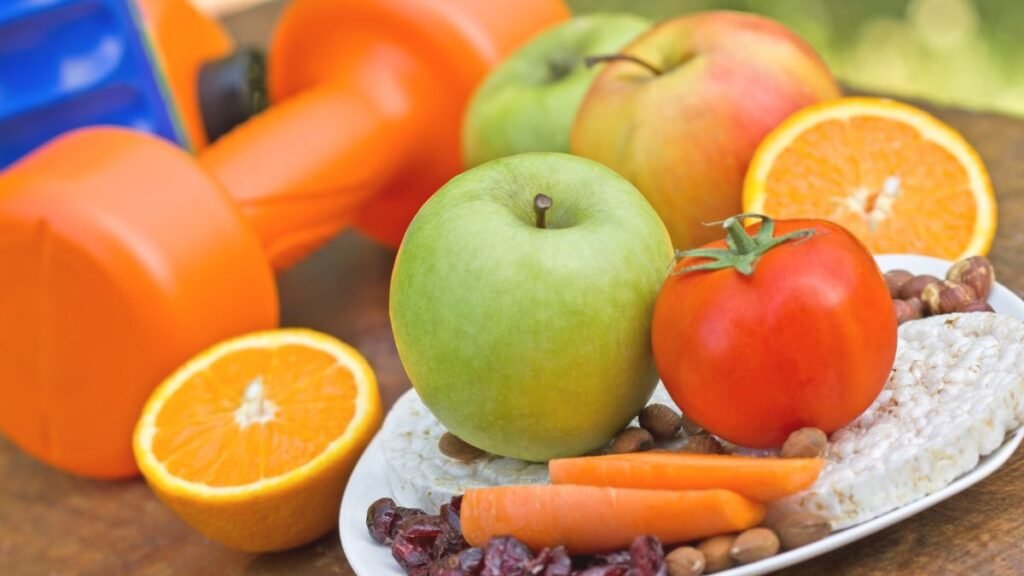
Combining Yoga with Other Forms of Exercise for a Flat Stomach
While yoga is highly effective for building core strength and improving muscle tone, combining it with other forms of exercise enhances fat-burning and accelerates the process of achieving a flat stomach. Yoga strengthens and tones the muscles, but to reduce overall body fat — especially in the midsection — you need to create a calorie deficit through a combination of strength training and cardiovascular exercise.
A balanced workout plan that includes yoga, strength training, and cardio helps you burn more calories, build lean muscle mass, and improve overall body composition. Let’s explore the most effective combinations:
Hot Yoga and Vinyasa
Hot yoga and Vinyasa are more intense styles of yoga that elevate your heart rate and increase calorie burn, making them effective for fat loss. Unlike restorative yoga, these forms of yoga function as both a strength and cardiovascular workout.
Why It Works:
- Elevates heart rate, leading to higher calorie burn.
- Engages deep core muscles through sustained poses and dynamic movements.
- Increases sweating, which can reduce water retention and temporary bloating.
- Improves flexibility and functional strength simultaneously.
Calories Burned:
- Hot Yoga: 400–600 calories per session (depending on intensity)
- Vinyasa: 300–500 calories per session
Best Practices:
- Aim for 3–4 sessions per week for optimal fat-burning and muscle-building benefits.
- Focus on core-engaging poses like plank, boat pose, and side plank.
- Hydrate well before and after class to replace lost electrolytes.
Pilates and Strength Training
Pilates and strength training are particularly effective for building deep core strength and toning the abdominal muscles. While yoga helps engage the core through balance and stability, Pilates and strength exercises target the muscle fibers more directly — leading to increased definition and strength.
Why It Works:
- Strength training increases muscle mass, which raises resting metabolic rate and supports fat burning.
- Pilates strengthens the transverse abdominis (deep core muscle), which flattens the stomach from the inside out.
- Muscle is metabolically active tissue — the more muscle you have, the more calories you burn at rest.
Effective Pilates and Strength Exercises:
- Mat Pilates: Focuses on core control and deep abdominal activation.
- Reformer Pilates: Adds resistance, increasing the challenge for deeper muscle activation.
- Weight Training: Squats, deadlifts, and compound exercises strengthen the core and larger muscle groups.
- Resistance Bands: Useful for targeting smaller stabilizer muscles in the core.
Frequency:
- Strength training: 2–3 times per week
- Pilates: 2–3 times per week
Pro Tip:
Combine yoga and Pilates in a single session — for example, start with Vinyasa flow and end with a Pilates core series for maximum muscle activation.
Cardio and HIIT
Cardio is essential for creating a calorie deficit and reducing overall body fat. While yoga builds muscle and improves flexibility, cardio increases calorie burn and metabolic rate — essential for fat loss, especially around the midsection.
High-Intensity Interval Training (HIIT) is particularly effective because it combines bursts of intense effort with short rest periods, leading to increased post-exercise calorie burn (known as the afterburn effect).
Why It Works:
- HIIT boosts metabolism for up to 24 hours after the workout.
- Improves cardiovascular health and endurance.
- Promotes overall fat loss, including abdominal fat.
- Fast and efficient — 20–30 minutes is enough for a complete HIIT session.
Effective Cardio and HIIT Options:
- Running: Burns 600–800 calories per hour.
- Cycling: Burns 500–700 calories per hour.
- Rowing: Burns 500–600 calories per hour.
- HIIT Workouts: 300–500 calories in 20–30 minutes.
Example HIIT Workout:
- 30 seconds of sprinting → 30 seconds of rest → Repeat for 10–15 minutes
- 20 seconds of mountain climbers → 10 seconds of rest → Repeat for 8 minutes
- Jump squats, burpees, and high knees → 30 seconds on, 30 seconds off for 10 minutes
Frequency:
- Cardio: 3–4 times per week
- HIIT: 2–3 times per week
Pro Tip:
Pair HIIT sessions with yoga to maximize recovery and reduce muscle soreness. For example, alternate between HIIT and yoga days to balance intensity and recovery.
While yoga strengthens and tones the core, combining it with strength training and cardio creates a well-rounded routine that maximizes fat loss and muscle definition.
- High-intensity yoga styles like Vinyasa and Hot Yoga increase calorie burn and improve muscle tone.
- Pilates and strength training build deep core strength and increase resting metabolic rate.
- Cardio and HIIT create a calorie deficit and accelerate fat loss.
For best results, aim for a balanced workout plan that includes:
- 3–4 yoga sessions per week
- 2–3 strength training or Pilates sessions per week
- 2–3 cardio or HIIT sessions per week
Addressing Common Challenges and Misconceptions
Misunderstandings about yoga and fat loss can create unrealistic expectations and discourage progress. While yoga is incredibly effective for building strength, flexibility, and improving mental focus, it is not a direct fat-burning tool on its own. Here are some of the most common misconceptions about yoga and core strength — and why they may be holding you back.
“Yoga alone will give me abs.”
This is one of the biggest misconceptions about yoga and core strength. While yoga is effective for strengthening and toning the core muscles, fat loss ultimately comes down to maintaining a calorie deficit — burning more calories than you consume.
Yoga can help you build muscle tone and improve definition, but if there’s a layer of fat covering your abs, those muscles won’t be visible until you reduce overall body fat.
Why It’s a Myth:
- Muscle definition requires low body fat levels, which comes from a combination of diet, strength training, and cardio.
- Most yoga styles burn fewer calories compared to cardio and strength training — unless you’re practicing high-intensity forms like Hot Yoga or Vinyasa.
- Without a proper diet and calorie deficit, visible abs are unlikely — no matter how strong your core is.
Solution:
- Combine yoga with strength training and cardio to increase overall calorie burn.
- Create a balanced meal plan that supports fat loss while maintaining muscle mass.
“My body shape can’t change.”
Many people believe they are “stuck” with their body shape due to genetics or age. While genetics do influence fat distribution, muscle tone and body composition can be significantly altered through targeted training and proper nutrition.
Yoga helps improve posture, muscle balance, and core strength — all of which create a leaner, more toned appearance. Improving core strength can help create a more defined waistline and flatter midsection, even without major weight loss.
Why It’s a Myth:
- Improving core strength enhances overall muscle tone and balance.
- Strengthening deep core muscles can create a more sculpted and defined waistline.
- Improved posture makes your midsection appear tighter and more balanced.
Solution:
- Focus on core-strengthening poses like planks, boat pose, and warrior III.
- Add strength training (like Pilates or weights) to reshape and tone the core.
- Improve posture through yoga alignment and targeted back exercises.
“I can’t eat carbs.”
Carbs have gotten a bad reputation in the fitness and weight loss world, but not all carbs are created equal. While refined carbs (like white bread, pastries, and sugary snacks) contribute to fat storage and bloating, complex carbs provide the energy and nutrients your body needs to fuel workouts and maintain muscle mass.
Cutting out carbs entirely can lead to low energy, poor workout performance, and increased cravings — which may ultimately sabotage your fat loss goals.
Good Carbs vs. Bad Carbs:
- Good Carbs: Sweet potatoes, quinoa, oats, brown rice, legumes, whole grain bread.
- Bad Carbs: White bread, pastries, sugary snacks, soda, refined pasta.
Solution:
- Include complex carbs in moderation to maintain energy levels and support recovery.
- Focus on whole, unprocessed carbs with a low glycemic index to avoid blood sugar spikes.
- Pair carbs with protein and healthy fats to stabilize energy levels.
Success Strategies and Tips from Real Users
Achieving a flat stomach requires consistency and a balanced approach to exercise and nutrition. Here are proven strategies that have helped real yoga practitioners strengthen their core and reduce belly fat:
Start with 3–4 Yoga Sessions Per Week
Yoga strengthens the core, improves muscle tone, and enhances flexibility. Consistency is key — aim for at least three to four sessions per week to see results.
Best Yoga Styles for Core Strength:
- Vinyasa or Power Yoga (for calorie burn and core strength)
- Ashtanga Yoga (for building overall strength)
- Hot Yoga (for increasing fat-burning potential)
- Core-Strengthening Flows (targeted workouts for abdominal muscles)
Tip: Alternate between strength-based and restorative sessions to balance muscle development and recovery.
Increase Protein Intake While Cutting Processed Carbs and Sugar
Protein supports muscle recovery and helps maintain a calorie deficit by increasing satiety. Increasing protein intake also prevents muscle loss when you’re reducing overall calories.
Best Protein Sources:
- Greek yogurt, eggs, chicken breast, tofu, and legumes
- Aim for 80–90g of protein daily for optimal muscle retention and fat loss
Reducing processed carbs and sugar helps stabilize blood sugar levels and prevents fat storage around the midsection.
Examples of Processed Carbs to Avoid:
- White bread, pasta, sugary snacks, and soda
Tip: Plan meals in advance to control sugar intake and maintain consistency.
Incorporate Strength Training and Cardio
Strength training increases muscle mass, which raises your resting metabolic rate and helps burn fat more efficiently. Cardio helps create a calorie deficit, which is essential for reducing body fat.
Suggested Weekly Plan:
- 3–4 yoga sessions (strength-based + restorative)
- 2–3 strength training sessions (Pilates, weights, resistance bands)
- 2–3 cardio or HIIT sessions (running, cycling, rowing)
Tip: Keep your workouts balanced to avoid burnout and overtraining.
Manage Stress Through Relaxation Techniques
Chronic stress raises cortisol levels, which encourages fat storage around the midsection. Yoga is effective for reducing cortisol, but combining it with mindfulness and relaxation techniques strengthens the mind-body connection and improves overall results.
Effective Stress Management Techniques:
- Restorative yoga
- Breathwork (pranayama)
- Meditation (10–15 minutes per day)
- Yoga Nidra (guided relaxation)
Tip: Include at least one restorative or relaxation-focused yoga session per week.

Monitor Bloating and Digestive Health
Digestive issues and bloating can make your stomach appear larger even if you’ve lost body fat. Probiotics and gut-friendly foods improve digestion and reduce water retention.
Probiotic-Rich Foods:
- Yogurt (with live cultures)
- Kimchi and sauerkraut
- Kombucha and kefir
- Pickled vegetables
Tip: Keep a food journal to identify foods that may be causing bloating or discomfort.
The most successful strategies for reducing belly fat and achieving a toned core involve a balanced approach to yoga, strength training, cardio, and proper nutrition.
- Yoga strengthens and tones the core.
- Strength training builds muscle and increases metabolism.
- Cardio creates a calorie deficit for fat loss.
- A high-protein diet supports muscle growth and fat reduction.
- Managing stress and improving gut health enhances overall results.
By combining these elements consistently, you’ll create a strong foundation for long-term fat loss and core strength.
Conclusion
Achieving a flat stomach with yoga is not just about doing endless core exercises — it requires a balanced approach that combines strength training, cardio, and proper nutrition with a consistent yoga practice.
Throughout this guide, we’ve explored how yoga strengthens the core, tones the midsection, and improves overall muscle definition. However, to reduce belly fat and reveal those core muscles, you need to:
- Create a calorie deficit through diet and exercise.
- Build muscle through strength training and Pilates to increase your resting metabolic rate.
- Burn fat through high-intensity yoga sessions and cardio.
- Manage stress and gut health to reduce bloating and improve digestion.
If you’re serious about deepening your yoga practice and achieving even better results, consider joining a structured yoga program like Joga Yoga Teacher Training. Not only will it strengthen your core and improve flexibility, but it will also give you a deeper understanding of body alignment, breathwork, and muscle engagement — all essential for a toned, strong core.
Many people have found that progressing from casual practice to more intentional, structured training has accelerated their results and helped them create a long-term fitness and wellness routine.
Ready to transform your core and deepen your practice? Explore Joga Yoga Teacher Training and discover how targeted core engagement and mindful movement can reshape your body and mind.

By combining yoga with strength training, cardio, and a balanced diet, you’re not just working toward a flat stomach — you’re building a stronger, healthier body from the inside out. Now is the time to take the next step in your journey.
Start small. Stay consistent. The results will follow.
